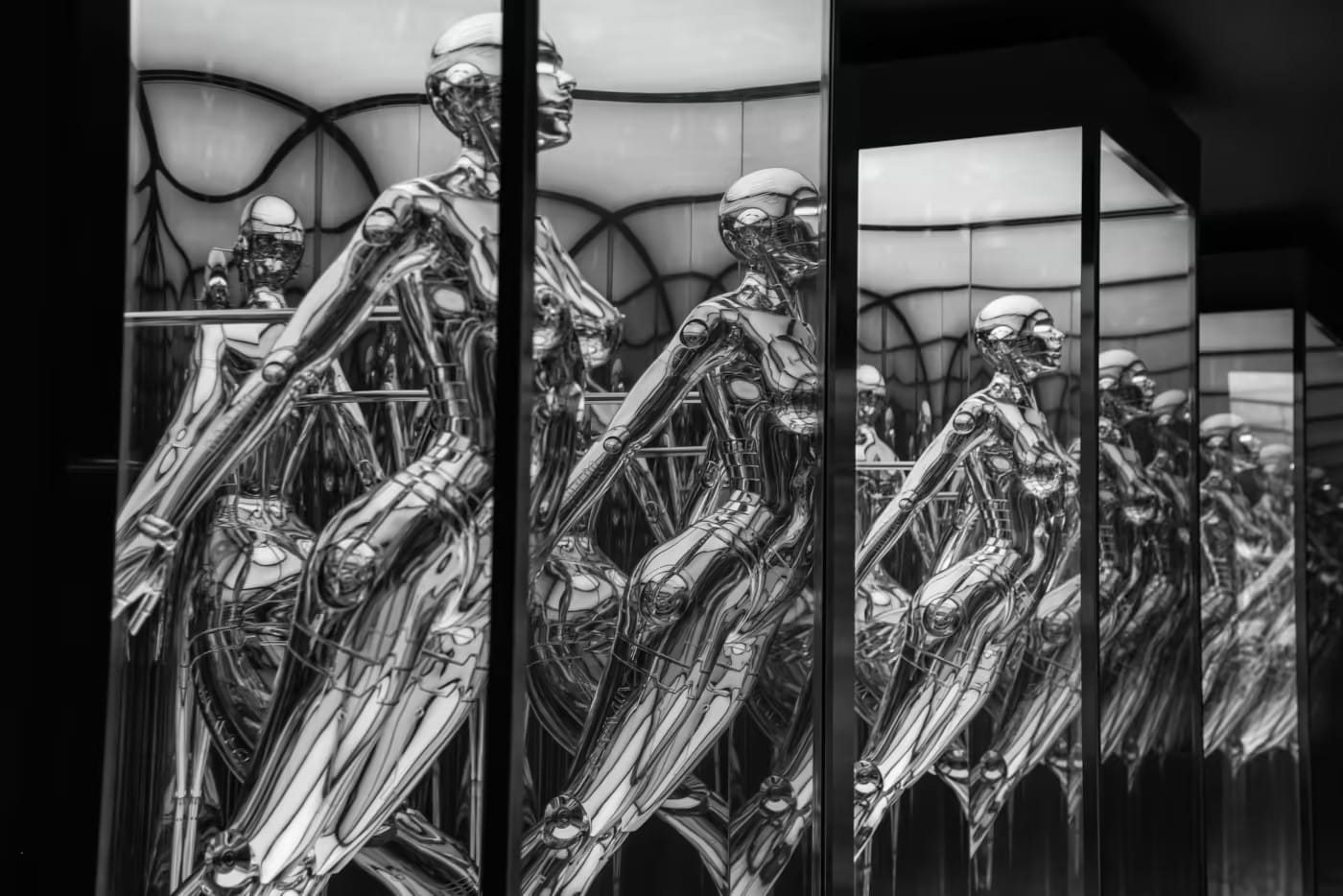The Fourth Law
The Fourth Law: When A.I. robots use or learn from human behavior or human creative output, this must happen symbiotically to benefit both humans and robots.

Human creativity is at a crossroads?
A robot may not injure a human being or, through inaction, allow a human being to come to harm.
A robot must obey the orders given it by human beings except where such orders would conflict with the First Law.
A robot must protect its own existence as long as such protection does not conflict with the First or Second Law.
Isaac Asimov
The power of Data
Art is a human creation or just a tool to communicate messages?
We recently learned that builders of powerful AI systems have been using internet text to train their models for years. Text by human beings. We’re talking about a lot of data. But there’s a problem: That data is about to run out. In July, tech reporter Kevin Roose wrote about the interesting paper Consent in Crisis: The Rapid Decline of the AI Data Commons — published by the Data Provenance Initiative, a research group at MIT — which found that over the past year, many of the major web sources used to train artificial intelligence models have restricted the use of their data.
The study looked at 14,000 web domains included in three common AI training datasets and found an “emerging consensus crisis” — publishers and online platforms have taken steps to prevent their data from being used. These restrictions are called the Robots Exclusion Protocol, it’s to say that website owners use a file called robots.txt to stop automated bots from crawling their pages.
Do AIs create?
I’m fine with the use of AIs, as long as they don’t encroach on my human territory. AIs do not create, they imitate, they copy, they generate from original data. That’s why it’s data collection that enables generative AI tools like OpenAI’s ChatGPT, Google’s Gemini, and Anthropic’s Claude to write, code, and generate images and videos — and it’s the high quality data fed into these models that produces the best results.
A closer look at the Copyright Act of 1976 highlights that copyright protection applies to “original works of authorship fixed in any tangible medium of expression,” but neither “author” nor “authorship” is defined by statute. The language of the Copyright Act of 1976 was left broad so that the statute did not bar future works enabled by technology from copyright protection. Would this mean that works created by artificial intelligence (AI) are copyrightable? [here]
Without any human help?
But what if AIs generate books without any human help? Well, they’ve been trained to do it using data they’ve collected over years of training. So, is a book written by a human as valuable as a book written by a machine? Maybe the problem is that we don’t even know what makes a book or a work of art valuable anymore. BTW, for all these years AI developers have been able to collect data freely, but the situation has changed — the boom of these systems and their massive use has attracted attention and concern. Okay, no fear, but there’s some tension ’cause people don’t want their creations to be used as AI training material. The feeling of losing control is unnerving and stifles creativity. It’s like we’re losing touch with the most human aspect of art.
“I’ve seen things you people wouldn’t believe… Attack ships on fire off the shoulder of Orion. I watched C-beams glitter in the dark near the Tannhäuser Gate. All those moments will be lost in time, like tears in rain. Time to die.”
Tears in rain monologue, from “Blade Runner”
Created by Humans Manifesto and the Fourth Law
For the past month, I’ve been working on a piece with Marco Brunet, an expert in information security systems and data management. That’s how I got to know the platform Created by Humans, that partners with The Authors Guild a law firm that offers services for authors. The idea behind Created by Humans is to help authors maintain control over their work by keeping track of how it’s used by AI companies and also receiving royalties. But the proposal goes a step further, talking about a symbiotic collaboration between humans and machines. Here is the Manifesto:
In the age of AI, human-created work can flourish like never before, or it can become an artifact of history.
AI is reshaping our understanding of what’s achievable, inspiring new possibilities for learning, creativity, and progress.
This innovation is fueled by the creative works of humans that the technology trains on. The depth of human experiences, vulnerabilities, emotions, and even imperfections that inspire creative works give AI its power.
To get the best out of technology, we must ensure we are also continuing to receive the best human-created works. Properly compensating the humans behind these works is the first step in ensuring their longevity.
We’re introducing The Fourth Law, a new constitution that helps ensure humans are incentivized to create in the world of AI.
The Fourth Law: When A.I. robots use or learn from human behavior or human creative output, this must happen symbiotically to benefit both humans and robots.
So, we’re talking about data, authors’ rights, and the collaboration between humans and machines. But I feel like the lines are getting thinner. Human creativity is based on subjective and intangible elements such as emotion and spiritual resonance — it can’t just be a “product”. It’s not just about exchanging data or copyrights. There’s a lot more at stake here. But it seems like the range of creative expression is narrowing. The Fourth Law has Asimov in it, but it has the feel of a Philip K. Dick novel. At least to me.
Thanks for reading!
If you spot any errors, please let me know and I’ll fix them!
More Insights
- AI & Copyright: Literary Arts in the Age of Machines
- Position: Data Authenticity, Consent, & Provenance for AI are all broken: what will it take to fix them?
- Consent in Crisis: The Rapid Decline of the AI Data Commons
- The Data That Powers A.I. Is Disappearing Fast
- Artificial Intelligence and Authorship Rights
- AI — Is it Art, yet?
- Can AI Infringe Moral Rights of Authors and Should We Do Anything About It: An Australian Perspective
- Artificial Intelligence Impacts on Copyright Law
- What Is an “Author”?-Copyright Authorship of AI Art Through a Philosophical Lens
- Copyright Protection for AI-Generated Works: Exploring Originality and Ownership in a Digital Landscape
- Authorship and AI tools
